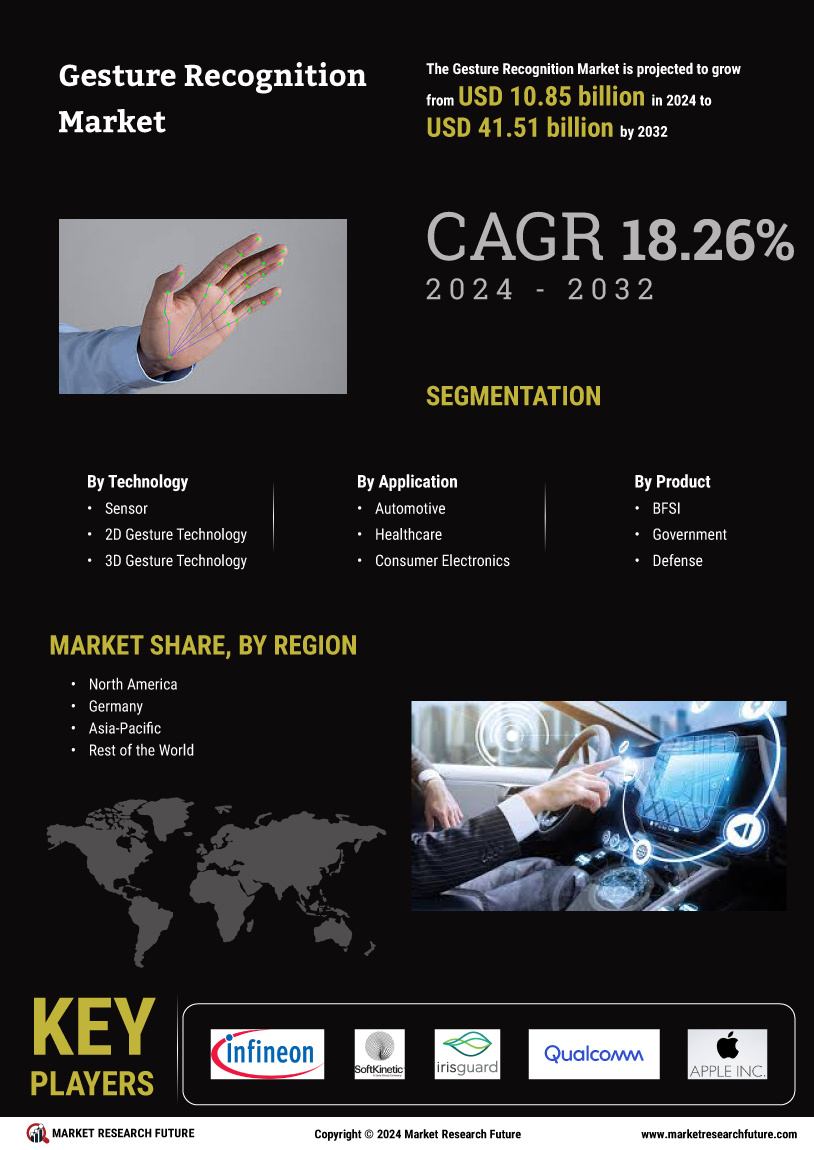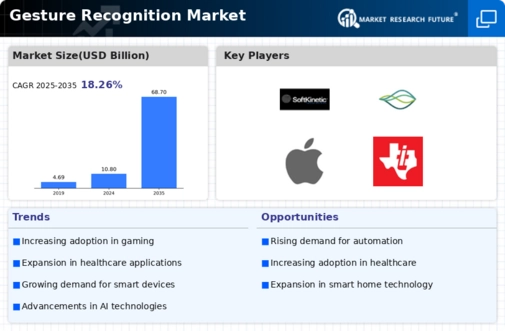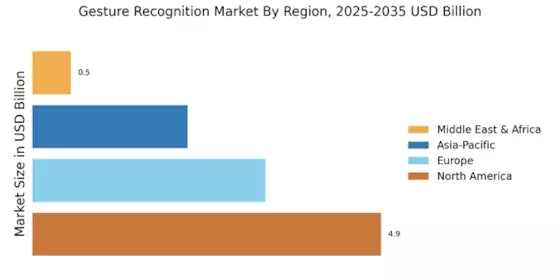The Gesture Recognition Market is currently characterized by a dynamic competitive landscape, driven by rapid technological advancements and increasing demand for intuitive user interfaces across various sectors. Major players such as Microsoft (US), Google (US), and Apple (US) are at the forefront, leveraging their extensive research and development capabilities to enhance their product offerings. Microsoft (US) focuses on integrating gesture recognition into its Azure cloud services, thereby enhancing user engagement and operational efficiency. Google (US), on the other hand, emphasizes the incorporation of gesture recognition in its smart home devices, aiming to create seamless user experiences. Apple (US) continues to innovate within its ecosystem, particularly in augmented reality applications, which are increasingly reliant on gesture-based interactions. Collectively, these strategies not only bolster their market positions but also intensify competition, as companies strive to differentiate themselves through technological innovation and user-centric designs.
In terms of business tactics, companies are increasingly localizing manufacturing and optimizing supply chains to enhance responsiveness to market demands. The Gesture Recognition Market appears moderately fragmented, with a mix of established players and emerging startups. This structure allows for a diverse range of solutions, although the influence of key players remains substantial, as they set industry standards and drive technological advancements.
In August 2025, Microsoft (US) announced a partnership with a leading automotive manufacturer to integrate gesture recognition technology into their vehicles, enhancing driver safety and interaction. This strategic move underscores Microsoft's commitment to expanding its footprint in the automotive sector, where gesture control can significantly improve user experience and operational safety. By aligning with automotive innovators, Microsoft (US) positions itself as a key player in the intersection of technology and transportation.
In September 2025, Google (US) unveiled a new gesture recognition feature for its Nest Hub devices, allowing users to control smart home functionalities with simple hand movements. This development not only enhances user convenience but also reflects Google's strategy to deepen its integration within the smart home ecosystem. By prioritizing gesture recognition, Google (US) aims to differentiate its products in a competitive market, potentially increasing customer loyalty and market share.
In October 2025, Apple (US) launched an updated version of its ARKit, which includes advanced gesture recognition capabilities for developers. This update is pivotal as it empowers developers to create more immersive applications, thereby expanding the utility of Apple's devices in various sectors, including gaming and education. By continuously enhancing its AR capabilities, Apple (US) reinforces its leadership position in the tech industry, fostering innovation and user engagement.
As of October 2025, the Gesture Recognition Market is witnessing trends that emphasize digitalization, sustainability, and the integration of artificial intelligence. Strategic alliances are increasingly shaping the competitive landscape, as companies collaborate to enhance their technological capabilities and market reach. Looking ahead, competitive differentiation is likely to evolve from traditional price-based strategies to a focus on innovation, advanced technology, and reliable supply chains. This shift suggests that companies that prioritize research and development, alongside strategic partnerships, will be better positioned to thrive in an increasingly competitive environment.


















Leave a Comment